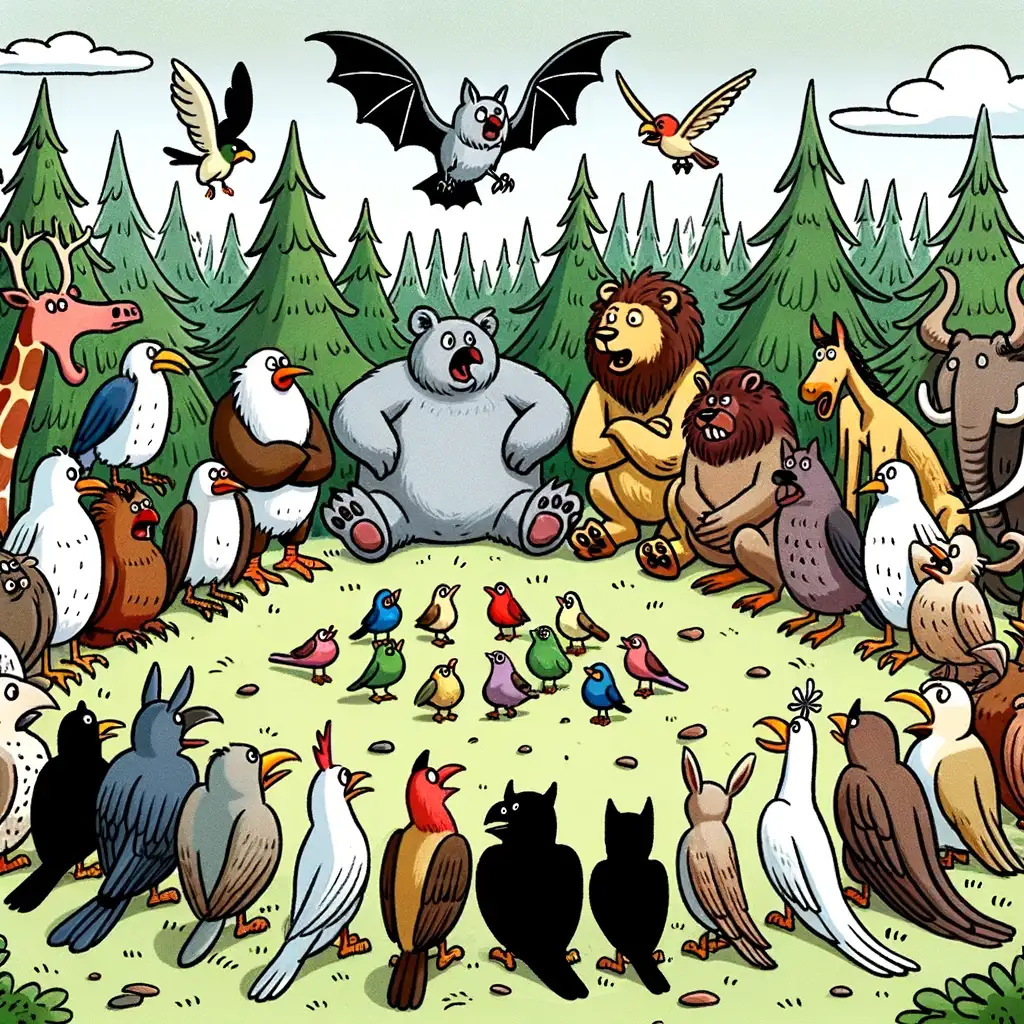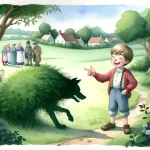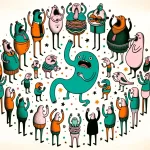
The Bat, the Birds, and the Beasts – An Aesop’s Fable
The kingdom of the Animalia was on the brink of turmoil. A disagreement between the Birds and the Beasts had grown into a full-blown feud. The air was thick with tension, and the looming conflict was as inevitable as the sunset.
Amidst this chaos, the Bat found itself in a state of profound ambivalence. Perched on a branch high above the ground, it heard the Birds chirping their war cries, “Join us, for you have wings like us!” Intrigued yet cautious, the Bat replied, “But am I not a Beast, with teeth and a mammalian heart?”
Days passed, and the discord intensified. Roaming Beasts, whose footsteps trembled the Earth, looked up to the Bat’s perch and bellowed, “Come, fight alongside us, for you share our instincts!” The Bat hesitated, its wings trembling, “But do I not soar the skies, singing the songs of the Birds?”
A miraculous turn of events unfolded. Just as the Animalia Kingdom braced for an inevitable clash, a truce was declared. The looming battle evaporated like morning dew, and peace prevailed. Relieved, the Bat found itself neither rejected by the Birds nor disowned by the Beasts. Yet, the internal struggle remained, its identity forever enigmatic.
What principles and lessons can be learned from the above an Aesop’s Fable?
“The Bat, the Birds, and the Beasts – An Aesop’s Fable” serves as a poignant reminder of the complexities that come with straddling two worlds. The Bat’s perpetual conflict of identity showcases the challenges—and perhaps the privileges—of being a creature of duality. But what is the value of an identity that cannot be firmly placed? The Bat’s survival through the averted war provides a bittersweet answer: sometimes, ambiguity offers a refuge.
However, let us not overlook the emotional toll. The Bat remains in a constant state of self-questioning, and that itself is a battle. The story imparts a valuable lesson about the consequences of an undefined identity in a world that demands labels. The Bat’s story is, in essence, a story of all of us who live in the margins, torn between cultures, communities, or self-expectations. And in this narrative, the unresolved tension is not a flaw but a feature, a poignant, ongoing dialogue between what is and what could be.


